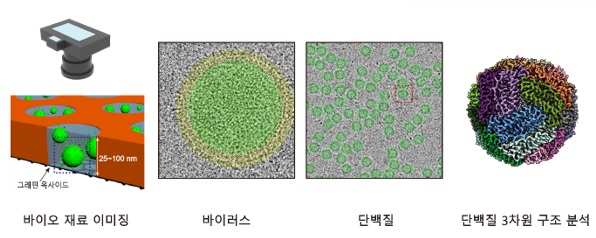- About
- Academics
-
Undergraduate Programs
- Civil and Environmental Engineering
- Architecture and Architectural Engineering
- Mechanical Engineering
- Industrial Engineering
- Energy Resources Engineering
- Nuclear Engineering
- Materials Science and Engineering
- Electrical and Computer Engineering
- Naval Architecture and Ocean Engineering
- Computer Science and Engineering
- Aerospace Engineering
- Chemical and Biological Engineering
-
Graduate Programs
- Civil and Environmental Engineering
- Architecture and Architectural Engineering
- Mechanical Engineering
- Industrial Engineering
- Energy Systems Engineering
- Materials Science and Engineering
- Electrical and Computer Engineering
- Naval Architecture and Ocean Engineering
- Computer Science and Engineering
- Chemical and Biological Engineering
- Aerospace Engineering
- Interdisciplinary Program in Technology, Management, Economics and Policy
- Interdisciplinary Program in Urban Design
- Interdisciplinary Program in Bioengineering
- Interdisciplinary Program in Artificial Intelligence
- Interdisciplinary Program in Intelligent Space and Aerospace Systems
- Chemical Convergence for Energy and Environment Major
- Multiscale Mechanics Design Major
- Hybrid Materials Major
- Double Degree Program
- Open Programs
-
Undergraduate Programs
- Campus Life
- Communication
- Prospective Students
- International Office
News
SNU Professor Jung Won Park - Professor Soung-hun Roh's Research Team Develops Graphene-Based Device Capable of High-Speed and High-Efficiency Imaging of Viruses and Proteins
-
Uploaded by
관리자
-
Upload Date
2021.09.24
-
Views
126
SNU Professor Jung Won Park - Professor Soung-hun Roh's
Research Team Develops Graphene-Based Device Capable of
Research Team Develops Graphene-Based Device Capable of
High-Speed and High-Efficiency Imaging of Viruses and Proteins
- Direct observation of virus and protein structures through cryogenic transmission electron microscopy
- Published in the world-renowned academic journal ‘Advanced Materials’ on September 12
- Published in the world-renowned academic journal ‘Advanced Materials’ on September 12

▲ From left, Professor Jung Won Park of SNU Department of Chemical and Biological Engineering,
Professor Soung-hun Roh of the Department of Biological Sciences, Researcher Minho Kang of the Department of Chemical and Biological Engineering, Researcher Junsun Park of the Department of Biological Sciences
Professor Soung-hun Roh of the Department of Biological Sciences, Researcher Minho Kang of the Department of Chemical and Biological Engineering, Researcher Junsun Park of the Department of Biological Sciences
Seoul National University's College of Engineering (Dean Byoungho Lee) announced on September 16 (Thursday) that the joint research team led by Professor Jung Won Park of the Department of Chemical and Biological Engineering and Professor Soung-hun Roh of the Department of Biological Sciences successfully developed a graphene-based device that enables direct observation of biomaterials of viruses and proteins with high speed and high efficiency through a cryogenic transmission electron microscope.
For the successful development of vaccines and new drugs, it is necessary to uncover the three-dimensional structure of viruses and proteins by high-definition imaging. In response to this need, cryogenic transmission electron microscopy, which directly observes structures at cryogenic temperatures after the rapid cooling of biomaterials, was developed, and related researchers were awarded the Nobel Prize in Chemistry in 2017.
Although this technique is an essential technique for revealing and analyzing the structure of biomaterials such as viruses and proteins, there are many difficulties in producing rapidly cooled specimens, limiting its active use.
Accordingly, the joint research team of Professors Jung Won Park and Soung-hun Roh succeeded in mass manufacturing a cryogenic transmission electron microscope device using the semiconductor manufacturing process and graphene-based 2D nanomaterials. Through this device, the structures of viruses and proteins were directly observed, and the three-dimensional structure of proteins was resolved.

▲ A diagram summarizing the research results published in Advanced Materials.
The device that was developed is has tens of thousands of micro-well structures, and by controlling the thickness of the micro-wells during the semiconductor process, the researchers succeeded in controlling the ice layer with a thickness of tens of nanometers through which the structure of viruses and proteins were photographed with atomic resolution.
In addition, it was confirmed that cryogenic transmission electron microscopy analysis of various nano-sized inorganic materials as well as biomaterials was possible.
"Through this study, high-speed and high-efficiency direct imaging of biomaterials such as viruses and proteins became possible and 3D structural analysis became possible through the large amount of data that was obtained. It is hoped to be used as a next-generation cryogenic transmission electron microscope analysis device for the development of COVID-19 vaccines and other new drugs in the future," said the joint research team.
Meanwhile, this research was carried out with the support of the Ministry of Science and ICT's bio/medical technology business project, the next-generation bio-imaging innovative technology development project, and the POSCO TJ Park Foundation and was published online on September 12 in Advanced Materials, a world-renowned journal in the field of materials.